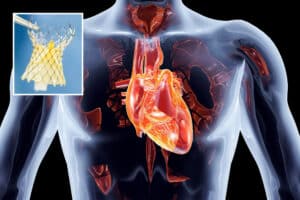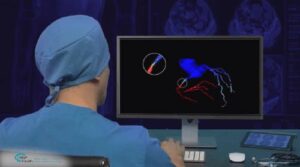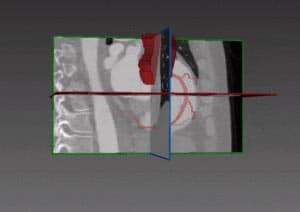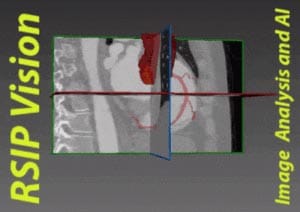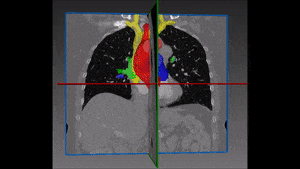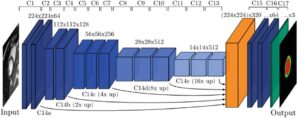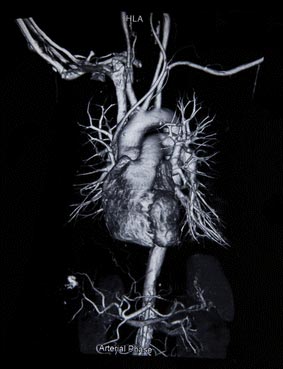
The health of coronary tree is monitored in clinics using 3D computed tomography (CT) angiography and ultrasound. Using CT, a 3-dimensional model of the heart and its vicinity can be constructed by collecting the slices obtained. Angiography enables visualization of the blood flow in arteries and capillaries, hence it is used as a method to visualize the blood vessels. Narrowing of the blood vessels can be located by CT angiography, thus allowing planning of invasive clinical intervention, such as stent placement.
Clinical intervention in pathological cases requires careful planning. A computerized model of the blood flow serves as a navigation, investigation and analysis tool before the intervention. However, manual inspection of the resulting image hinders timely response. The complexity of the vascular tree seen in the 3D representation slows down significantly the detection of narrowed regions, leaky vessels and other pathologies.
Automated detection of anomalies on coronary CT angiography using deep learning
A computational approach to the detection of anomalies can therefore prove to be superior to manual labor, both in terms of processing time and accurate localization of pathologies. Since the deep learning revolution, the algorithmic approach produces state-of-the-art results, much better than with any previous method.
For this end, RSIP Vision has constructed an algorithm to detect coronary anomalies from CT image stacks, which automatically segments the arteries. The production of 3D CT images of the active heart requires fast imaging technology which works on multiple scanned layers simultaneously. The main challenge for our software was to automatically separate the different components of the 3D image. We needed to locate the muscular layer (myocardium) of the heart in the images to guide the rest of the segmentation process.
Prior to the training, the data set was cleaned, and problematic scans were removed . We generated the training dataset for our Convolutional Neural Network (CNN) using traditional computer vision techniques: namely, ‘minimal graph cut’, an algorithmic image segmentation technique taken from the graph theory world, to separate the myocardium from the visceral and parietal pericardium layers of the heart within the images. Our U-Net based CNN was trained with these labeled data. The results of this cutting edge deep learning procedure are far better than with any of the methods that were available beforehand.
The software is used to accurately segment arteries, locate blockages and pinpoint other abnormalities. This non-invasive process suppresses the need for (sometime dangerous) cardiac catheterization procedures, sparing thus needless risks of injuries. RSIP Vision has been specializing in cardiological surgery computational aids for the past 20 years. Our deep learning algorithms, put to challenge in both sterile and clinical applications, have proven extremely successful in coronary CT angiography anomalies detection and in all kinds of image processing in cardiology tasks. Take us along for your next Deep Learning project.

 Cardiology
Cardiology